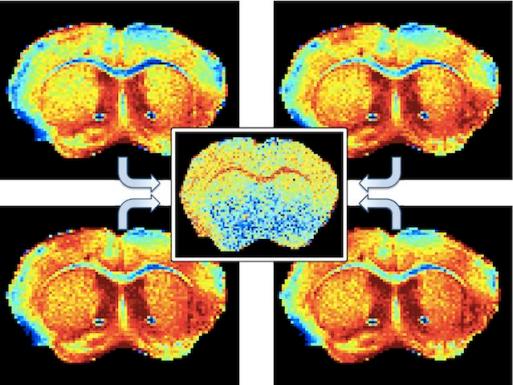Month: February 2014
Diffusion-assisted selective dynamical recoupling: A new approach to measure background gradients in magnetic resonance | J. Chem. Phys. (2014)
Diffusion-assisted selective dynamical recoupling: A new approach to measure background gradients in magnetic resonance
Gonzalo A. Álvarez, Noam Shemesh and Lucio Frydman
J. Chem. Phys. 140, 084205 (2014); http://dx.doi.org/10.1063/1.4865335
Dynamical decoupling, a generalization of the original NMR spin-echo sequence, is becoming increasingly relevant as a tool for reducing decoherence in quantum systems. Such sequences apply non-equidistant refocusing pulses for optimizing the coupling between systems, and environmental fluctuations characterized by a given noise spectrum. One such sequence, dubbed Selective Dynamical Recoupling SDR [P. E. S. Smith, G. Bensky, G. A. Álvarez, G. Kurizki, and L. Frydman, Proc. Natl. Acad. Sci. 109, 5958 (2012)], allows one to coherently reintroduce diffusion decoherence effects driven by fluctuations arising from restricted molecular diffusion [G. A. Álvarez, N. Shemesh, and L. Frydman, Phys. Rev. Lett. 111, 080404 (2013)]. The fully-refocused, constant-time, and constant-number-of-pulses nature of SDR also allows one to filter out “intrinsic” T1 and T2 weightings, as well as pulse errors acting as additional sources of decoherence. This article explores such features when the fluctuations are now driven by unrestricted molecular diffusion. In particular, we show that diffusion-driven SDR can be exploited to investigate the decoherence arising from the frequency fluctuations imposed by internal gradients. As a result, SDR presents a unique way of probing and characterizing these internal magnetic fields, given an a priori known free diffusion coefficient. This has important implications in studies of structured systems, including porous media and live tissues, where the internal gradients may serve as fingerprints for the systems composition or structure. The principles of this method, along with full analytical solutions for the unrestricted diffusion-driven modulation of the SDR signal, are presented. The potential of this approach is demonstrated with the generation of a novel source of MRI contrast, based on the background gradients active in an ex vivo mouse brain. Additional features and limitations of this new method are discussed.
© 2014 AIP Publishing LLC
